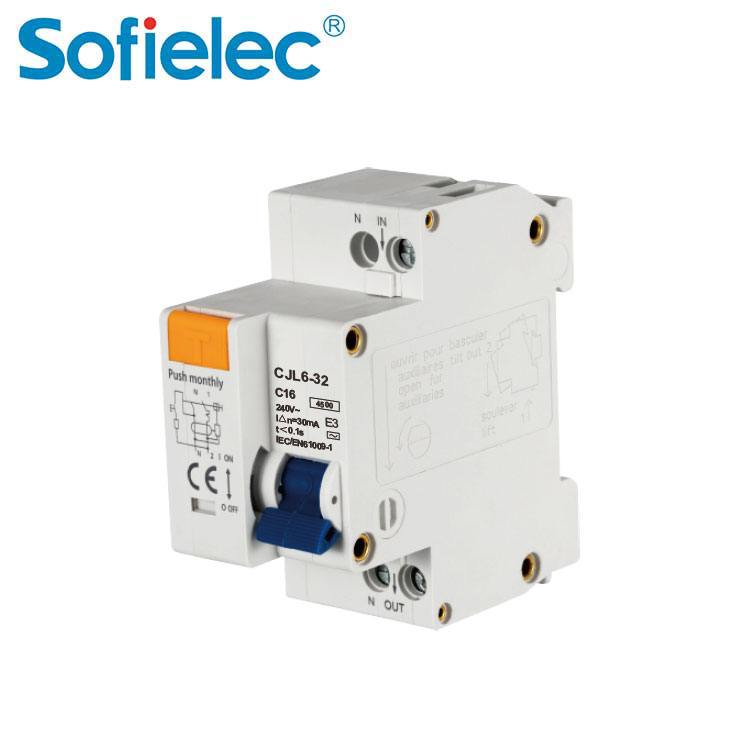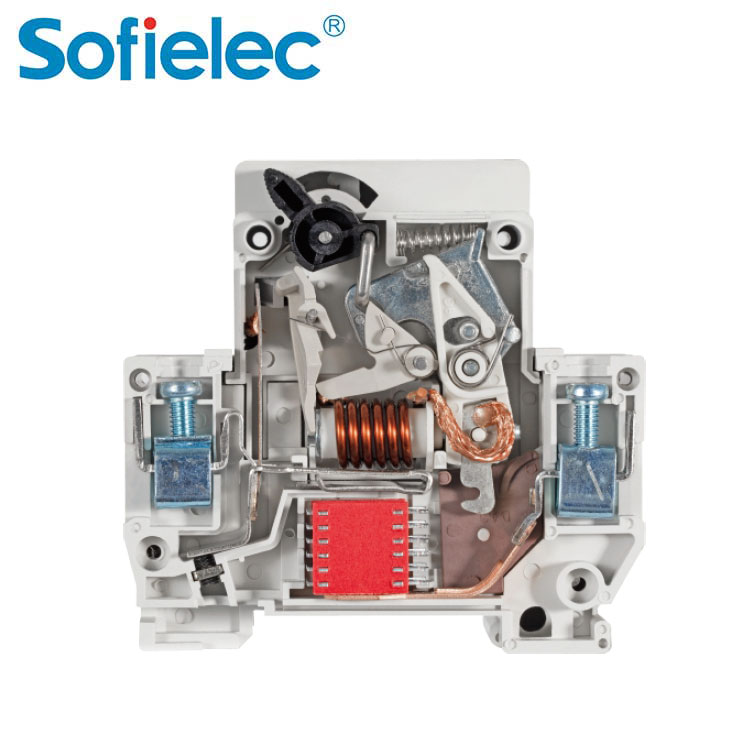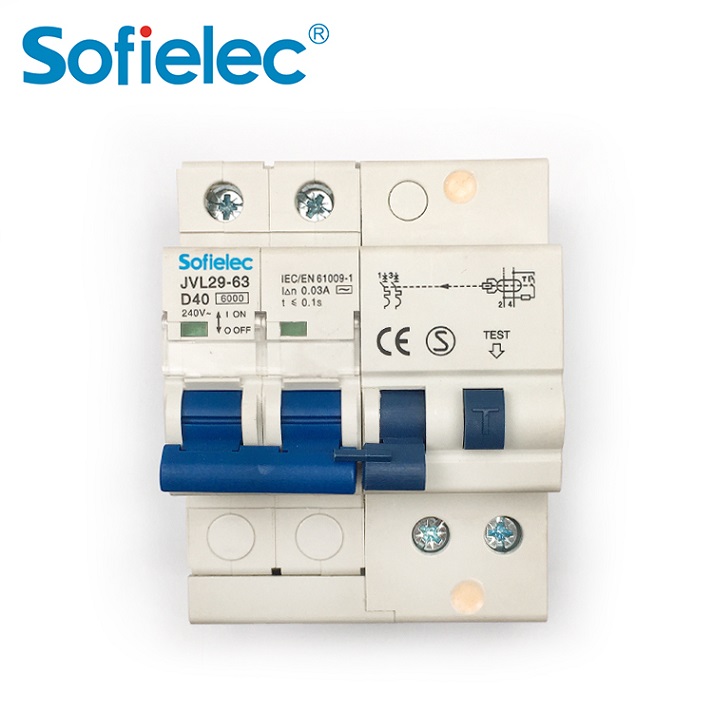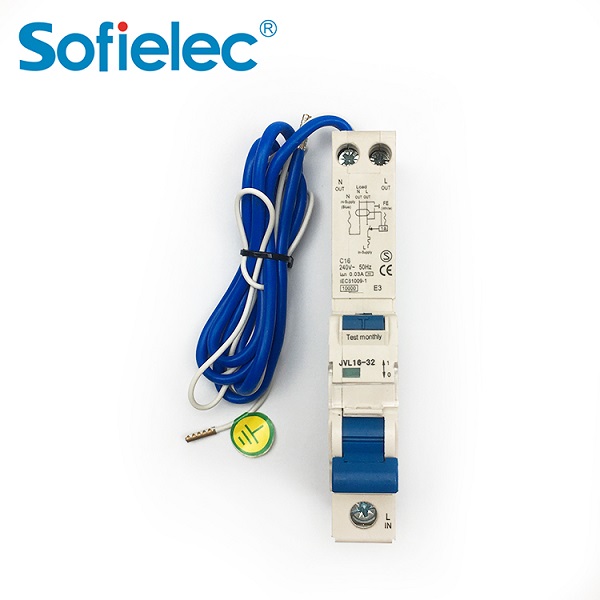Residual Current Circuit Breaker With Overcurrent Protection Construction and Feature
Provides protection against earth fault/leakage current, short-circuit, overload, and function of isolation.
Contact position indication
Provides protection against indirect contact by human body
Provides complementary protection against direct contact by human body.
Effectively protects electric equipment against insulating failure
Equipped with switched neutral and phase pole
Provides protection against over-voltage
Provides comprehensive protection to household and commercial distribution systems.
Residual Current Circuit Breaker With Overcurrent Protection CJL6-32 Technical Data
Type: Electronic type
Residual current characteristics: AC
Pole No.: 1P+N
Tripping curve: B, C, D
Rated short-circuit capacity: 4.5kA
Rated current (A): 6, 10, 16, 20, 25, 32
Rated voltage: 240V AC
Rated frequency: 50/60Hz
Rated residual operating current(mA): 0.03, 0.1, 0.3
Tripping duration: instantaneous≤0.1s
Electro-mechanical endurance: 4000 cycles
Connection terminal: pillar terminal with clamp
Terminal Connection Height: H1=16mm H2=21mm
Over-voltage tripping: 280V±5%
Overcurrent Circuit Breaker Technical Data
■S2 Shunt Tripper
■U2+O2 Over-voltage and under-voltage tripper
■Connection capacity:
□Flexible conductor 10mm2
□Rigid conductor 16mm
■Installation:
□On symmetrical DIN rail 35.5mm
□Panel mounting
Overall & Installation Dimensions
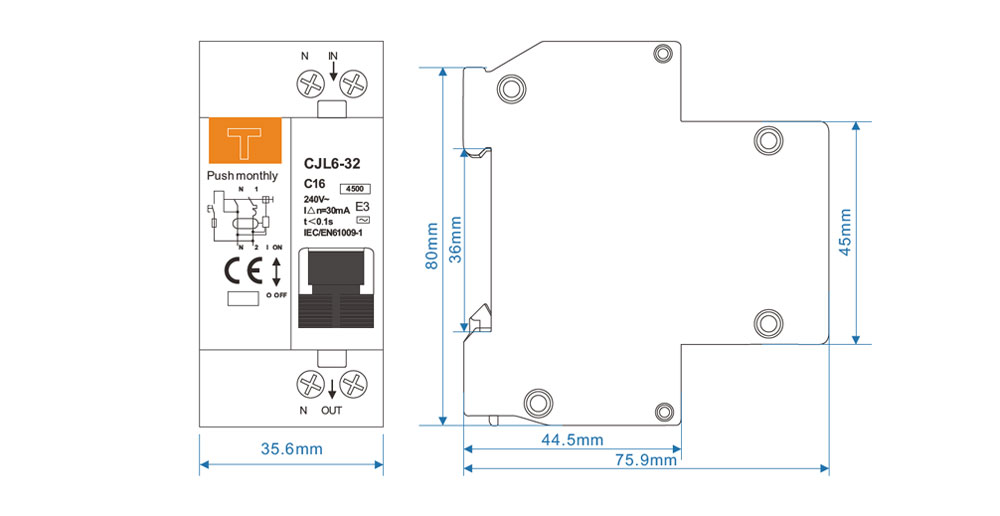
Residual Current Protective Device Characteristic Curve
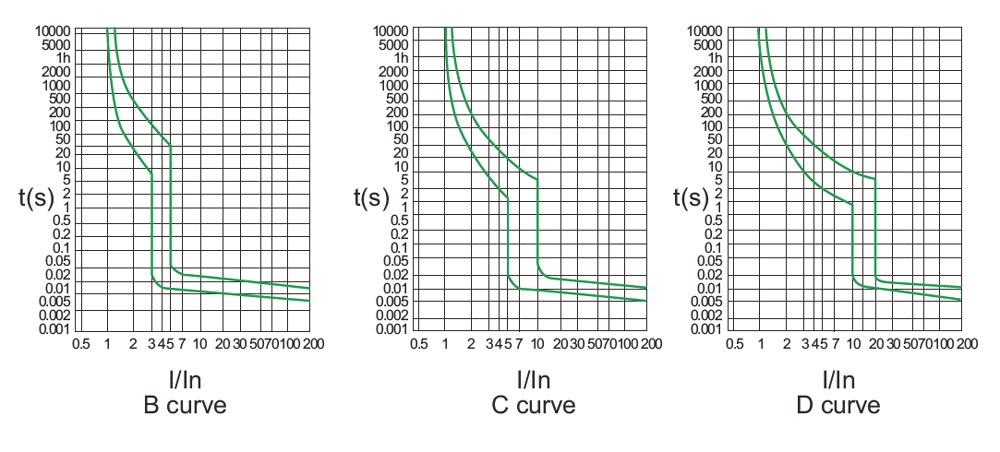
Overcurrent Protection Device Wiring Diagram
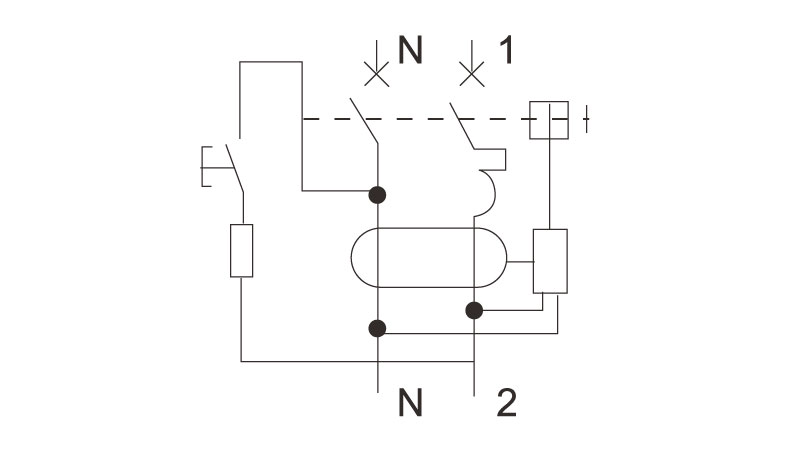
Overload Current Protection Characteristics
| Test procedure | Type | Test Current | Initial State | Tripping or Non-tripping Time Limit | Expected Result | Remark |
| a | B,C,D | 1.13In | cold | t≤1h | no tripping | |
| b | B,C,D | 1.45In | after test a | t<1h | tripping | Current in the 5s in th increase of stability |
| c | B,C,D | 2.55In | cold | 1s<t<60s(In≤32A) 1s<t<120s(32<In≤63A) |
tripping | |
| d | B | 3In | cold | t≤0.1s | no tripping | Turn on the auxiliary switch to close the current |
| C | 5In | |||||
| D | 10In | |||||
| e | B | 5In | cold | t<0.1s | tripping | Turn on the auxiliary switch to close the current |
| C | 10In | |||||
| D | 20In | |||||
| The terminology “cold state” refes to that no load is carried before testing at the reference setting temperature. | ||||||
Residual Current Action Breaking Time
| type | In/A | I△n/A | Residual Current (I△) Is Corresponding To The Following Breaking Time (S) | |||||
| I△n | 2 I△n | 5 I△n | 5A,10A,20A,50A,100A,200A,500A | I△t | ||||
| general type | any value | any value | 0.3 | 0.15 | 0.04 | 0.04 | 0.04 | Max Break-time |
| The general type RCBO whose current IΔn is 0.03mA or less can use 0.25A instead of 5IΔn. | ||||||||
A Type Of Trip Current Range
| Lagangle(A) | A Tripping Current(A) | |
| Lower Limit | Upper Limit | |
| 0° 90° 135° |
0.35 I△n 0.25 I△n 0.11 I△n |
0.14 I△n |
> What are the four types of timer switches?
A time switch, often simply referred to as a timer, is a device that automatically controls when an electrical circuit is turned on or off. It's like a programmable ...
> Can You Replace a 10 Amp Breaker with a 20 Amp Breaker?
Replacing a 10-amp circuit breaker with a 20-amp one without a thorough professional evaluation is extremely dangerous and poses a significant fire hazard. Let's ana...
> What Makes a Circuit Breaker Essential for Home Electrical Safety?
Home electrical safety ranks high on every homeowner’s priority list, yet many overlook the quiet workhorse that prevents crises before they start. This device acts ...
> What Scenarios Require the Use of a Residual Current Circuit Breaker?
Electrical safety is a top priority in daily life and work, yet many people are unsure when to use a device that guards against electric shock. This article explains...

